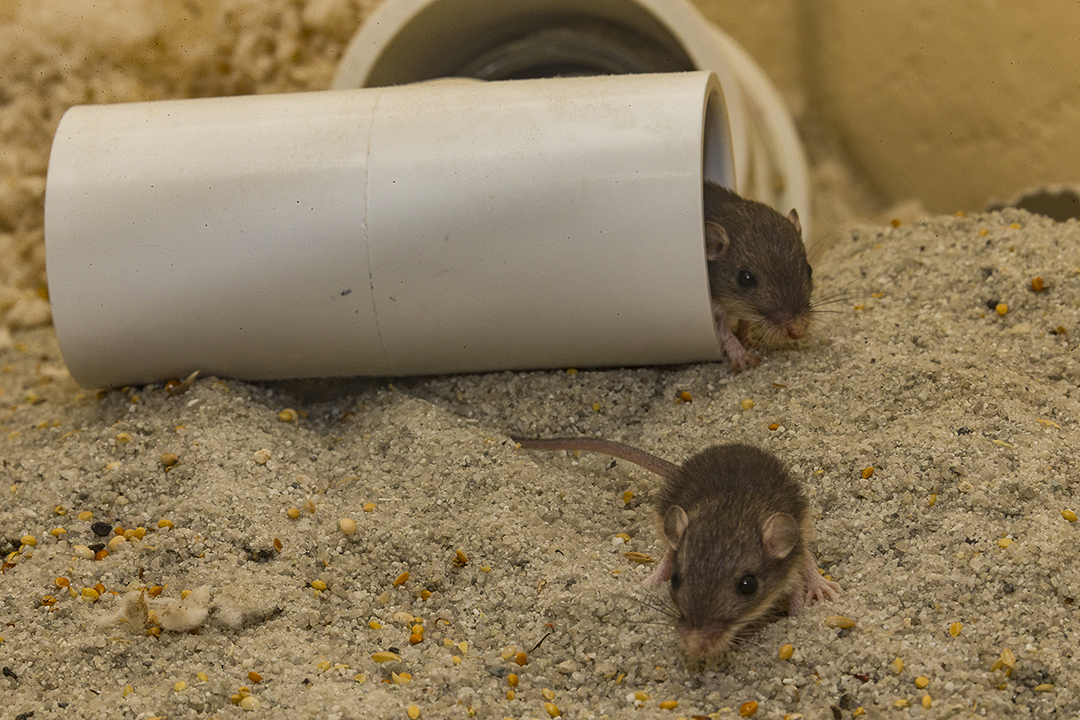
San Diego Zoo Global Welcomes 19 Pacific Pocket Mouse Pups at the Start of Its Fourth Breeding Season
Breeding Program Staff Prepares to Release Animals to Native Habitat
San Diego Zoo Global is experiencing continued success with a breeding program for the endangered Pacific pocket mouse. The fourth breeding season started in February 2016, and it has already yielded 19 Pacific pocket mouse pups. Their stages of development range from pups that are blind, pink, hairless and weigh less than 2 grams, to pups that are 4 grams, beginning to wean from their mother and forage for seeds on their own. The Pacific pocket mouse is the smallest mouse species in North America, and adults typically weigh between 6 and 7 grams.
The gestation period for a Pacific pocket mouse is 23 days, and the species can reach sexual maturity in about 41 days. Because of this, pocket mice that are born this season could reproduce and give birth or father pups this season, too.
Due to the short time frame between birth and sexual maturity, and the success the program has had in breeding this species, the program managers are preparing to release 50 Pacific pocket mice into coastal habitat in Southern California by June 2016.
“People think ‘mouse’ and they think of a pest in their house, but these are native California rodents that don’t reproduce like crazy,” said Debra Shier, Ph.D., Brown endowed associate director of applied animal ecology for the San Diego Zoo Institute for Conservation Research. “Pacific pocket mice are critical to their ecosystem function, because they are seed eaters and disperse the seeds of native plants. They also dig burrows that hydrate and increase nutrient cycling.”
The Pacific pocket mouse was thought to be extinct in the 1980s, but it was rediscovered in the wild in 1993. Starting in 2012, 30 adult Pacific pocket mice were taken from the three remaining wild populations to participate in a breeding program at an off-exhibit area at the San Diego Zoo Safari Park. Today, scientists at the breeding facility are caring for more than 125 Pacific pocket mice.
The Pacific pocket mouse breeding program is managed by staff at the San Diego Zoo Institute for Conservation Research, in cooperation with the U.S. Fish and Wildlife Service. The breeding facility uses air conditioning and humidifiers to mimic the coastal temperatures and humidity the mice require. The facility is also equipped with large skylights to make sure these nocturnal animals are attuned to the rising and setting of the sun, which cues their activities. The animals’ nocturnal nature also requires researchers to observe them at night without disturbing them by using red lights, which are not visually perceived by the animals. Each individual Pacific pocket mouse enclosure includes PVC pipes that act as tunnels and burrows for the Pacific pocket mouse, but still allow researchers access to check on the animals.














